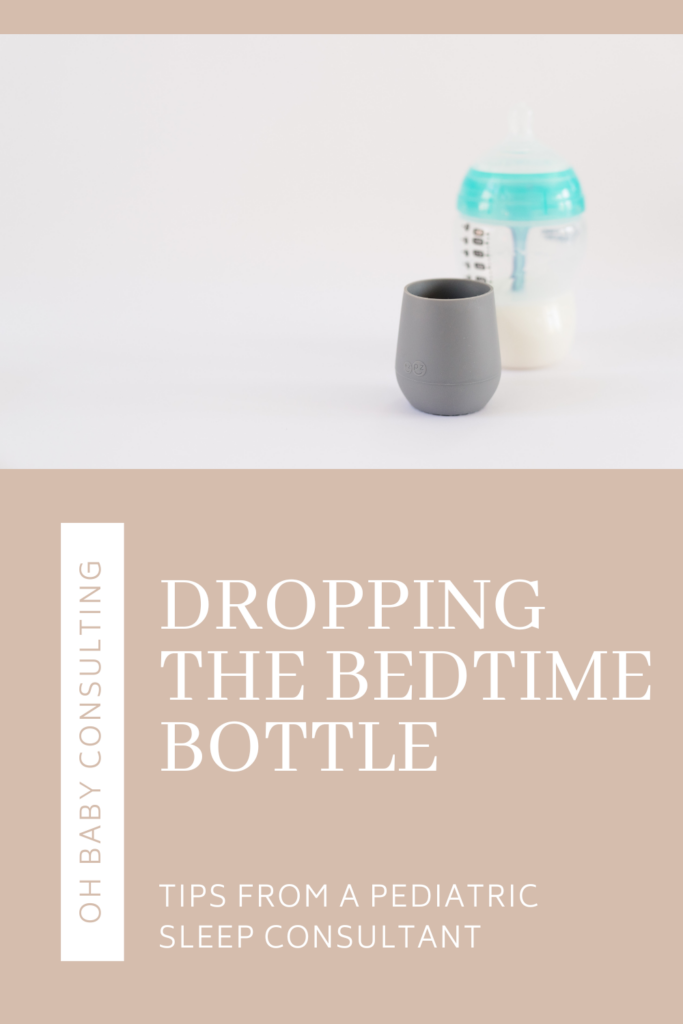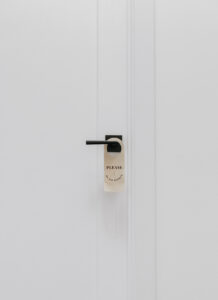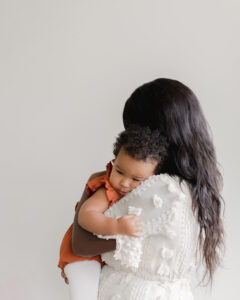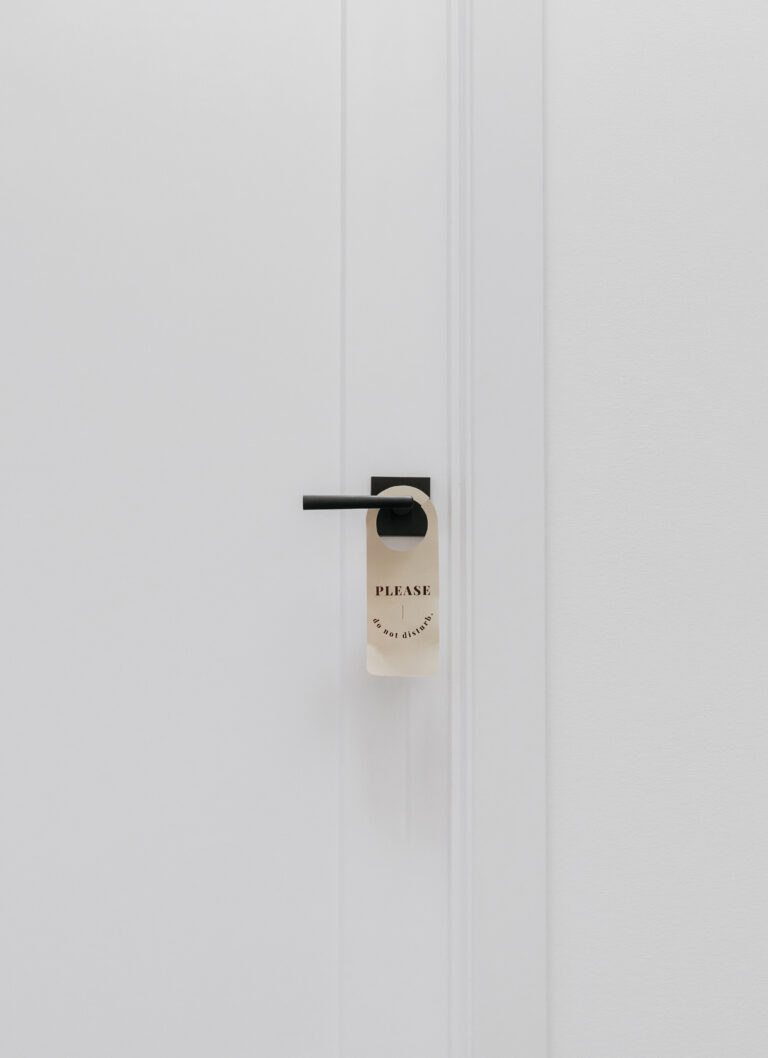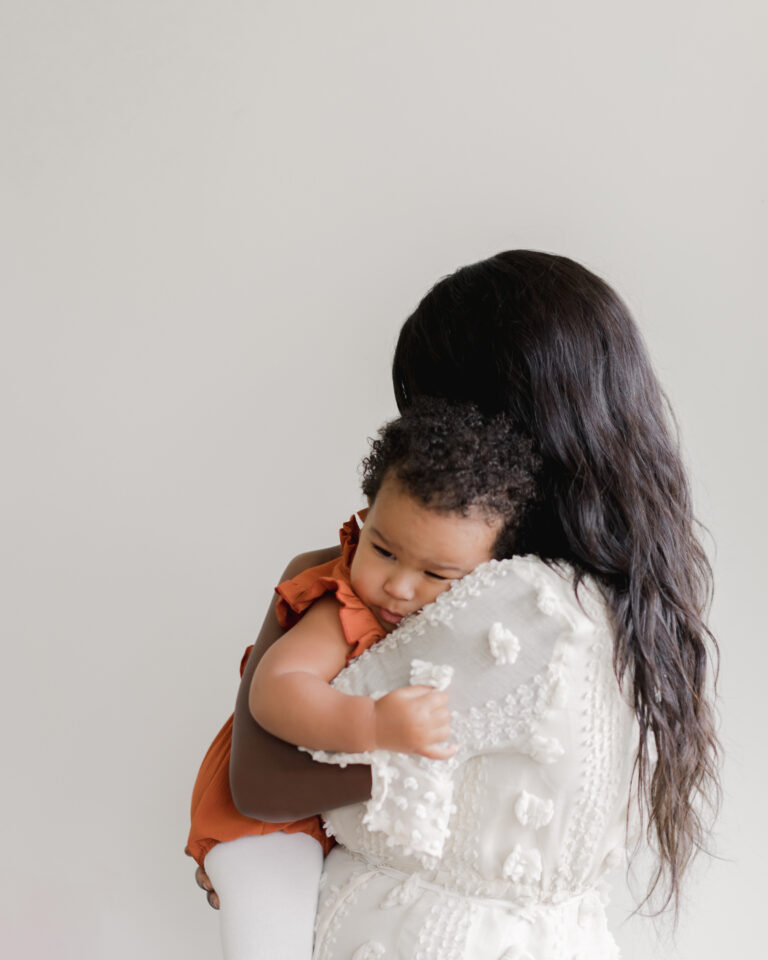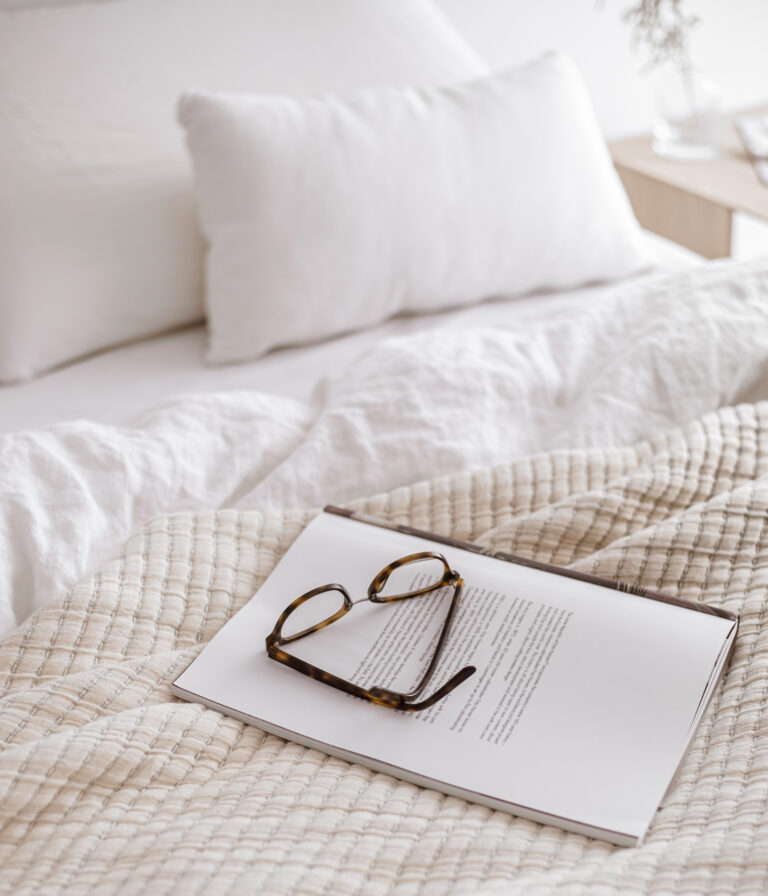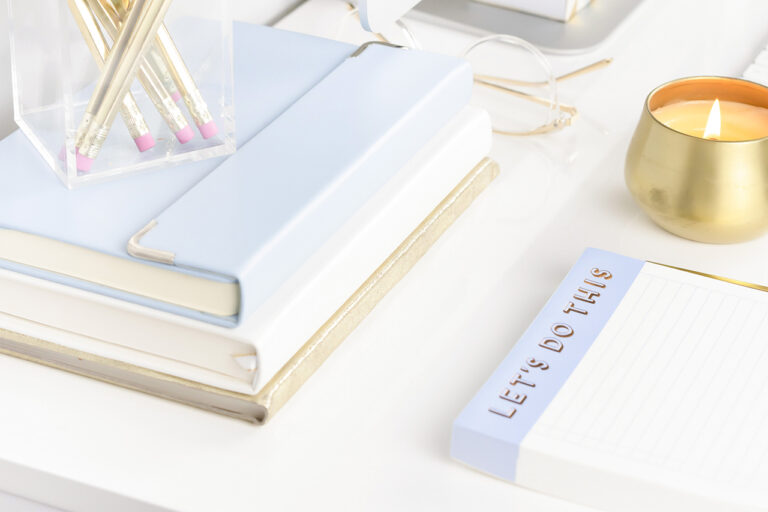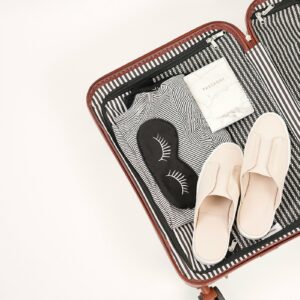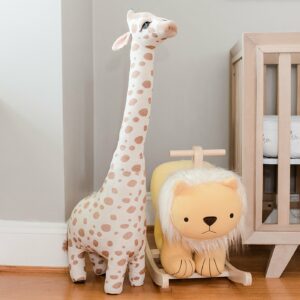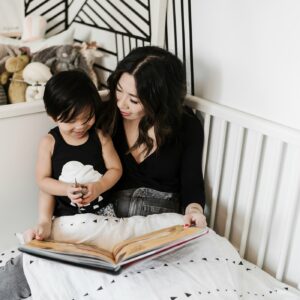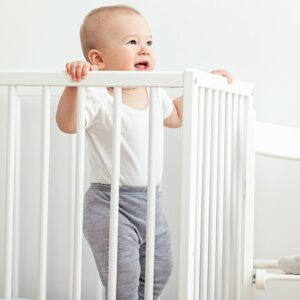Bottles (and feedings in general) are an important part of your child’s bedtime routine during the first year of their life. Bottles help fill up your child’s tank and prepare them for a 10-12 hour long stretch of overnight sleep (once they no longer need to eat overnight that is). But at a certain point, your child will be getting the majority of their calories from solid foods during the day & will no longer need that evening top-off.
Here’s what you need to know about when & how to drop the bedtime bottle.
What age should I drop the bedtime bottle?
I recommend removing bottles from your bedtime routine by 12-13 months. By this time, your child’s nutritional needs are being met through solid foods at meals and snacks during the day. While babies under 12 months supplement their milk intake (breastmilk or formula) with solid foods, toddlers are the opposite. Milk becomes a drink that now accompanies & enriches a balanced solid-food diet. They no longer need it to “fill up” overnight.
The vast majority of families I talk to who are continuing to use a bottle beyond this time are doing so because their child is using it as a tool to fall asleep (also known as a “sleep prop”). But if your child is simply using a bottle as a means for some extra calories before bedtime, know that by this age you can safely eliminate this feeding.
Around age 1, your pediatrician may also discuss removing bottles altogether and instead using a sippy cup, a staw cup, or an open cup. Making sure your child is not using the bottle as a tool to fall asleep is going to ensure that sleep stays perfect as you transition away from bottles.
Please always consult with your child’s pediatrician before making feeding changes.
Why is it important to drop the bedtime bottle?
There are a few reasons why I recommend eliminating the bedtime bottle around 12-13 months:
- This usually aligns with when your pediatrician recommends dropping bottles altogether.
- Your child likely has a few if not several teeth by this time. Eliminating the bottle at bedtime will cut down on the risk of milk-deposits and cavities.
- Your child may start to eat less at dinner to save room for their bedtime bottle.
How do I drop the bedtime bottle?
First, you need to make sure that your child is not using the bottle as a vehicle for falling asleep. If they are using the bottle as a means to get drowsy or fall all the way to sleep, the process of removing it is going to be a little more involved.
If your child is falling asleep while eating, I want to help you take the next step! Both Oh Baby Sleep Course & 1:1 Sleep Coaching will help you teach your child to fall asleep without the bottle and then sleep all night long!
If your child is already falling asleep independently, I’d recommend first moving the timing of the bottle to the beginning of the bedtime routine (even before a bath). This will put some separation between the bottle and bed and help ease the transition. It can also help you adjust if you are nervous to remove it cold-turkey. Your child may have zero interest in having their bottle at this earlier time, and that’s okay. Offer it before bath for a few nights and do not offer more after bath. It can be an adjustment for some children, and others won’t care or seem to notice at all.
Once you’ve moved the timing of the bottle for a few days (or if your bottle was already the first step of your bedtime routine) offer it with dinner instead. You can either offer their bottle (for an additional step in the process) or move straight to milk in a cup. Either way, the last milk your child gets should be with their dinner meal.
This gradual transition is best for children who are 12-18 months. Once your child is over 18 months, I’d encourage you to drop bottles (bedtime & otherwise) cold turkey. This will be less confusing to your child who is more cognitively sophisticated. If your older child is struggling with the removal of the bottle, try to make the transition more exciting and less anxiety-provoking by buying new & special cups, offering a lovey to hug when they’re missing their bottle, and staying consistent!
As a reminder, please run all recommendations by your pediatrician or other trusted nutritional resource prior to making changes. I am your sleep expert, not your feeding expert!
I know it can be tempting to replace bottles of formula with warm milk in a cup during the bedtime routine, but please try to avoid this. There is no need to replace the bedtime bottle with anything, and there is some correlation between milk and sleep issues in toddlers. Milk has a lot of sugar in it, and a spike in blood sugar levels can cause hyperactivity and difficulty settling for more sensitive toddlers. Additionally, the later blood-sugar crash can cause night wake ups and even nightmares.
What about breastfeeding?
Weaning from breastfeeding at age one is optional, especially if your child is not relying on it to fall asleep. Offering a nursing session in the evening is not the same as offering formula or milk as the composition of breastmilk naturally evolves as your child matures. However, it can be helpful to move breastfeeding to either the beginning of the bedtime routine or immediately after dinner to help separate it from sleep. That way, when you do wean, sleep is less likely to be disrupted.
I hope this gives you a plan for when & how to eliminate bottles from your bedtime routine. If your child is using the bottle as a tool for falling asleep, please reach out & we can get a plan in place to help you keep sleep on track & say goodbye to bottles for good!
